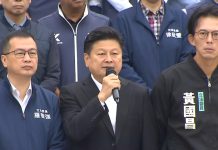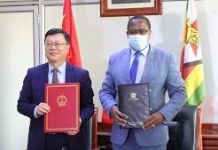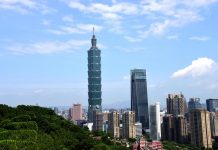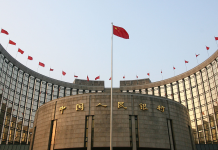By Cheng Shijie, People’s Daily
This year marks the 10th anniversary of the Belt and Road Initiative (BRI), and the launch of China-Pakistan Economic Corridor (CPEC) as well.
Over the past 10 years, China and Pakistan have followed the principle of extensive consultation, joint contribution and shared benefits, forming a “1+4” cooperation layout that centers on the CPEC construction and focuses on the cooperation of Gwadar Port, energy, transportation infrastructure, and industry. Both the CPEC construction and Pakistan’s development have achieved rapid progress.
Pakistani Prime Minister Shahbaz Sharif commented that the remarkable achievements of the CPEC construction have profoundly transformed Pakistan’s economic and social landscape.
China-Pakistan energy cooperation has achieved remarkable results. A number of renewable energy projects like the Karot Hydropower Station, Dawood wind farm project and the Quaid-e-Azam Solar Park in Bahawalpur have enriched Pakistan’s energy structure and greatly helped address the country’s severe power shortage problem it was facing.
Transportation projects between the two countries, including the Phase II project of the Karakoram Highway, the Orange Line Metro Train project in Lahore and the Peshawar-Karachi Motorway project, have significantly boosted local connectivity.
So far, the Phase I of the Rashakai special economic zone has been completed, with promising progress in investment promotion.
Statistics indicate that by the end of 2022, the CPEC had brought a cumulative total of $25.4 billion in direct investment to Pakistan, created 236,000 jobs, and helped the country add 510 kilometers of highways, 8,000 MW of electricity, and 886 kilometers of its core power transmission grids.
The Gwadar Port has seen major development over the past decade. The first phase of Gwadar Port’s Free Zone was completed, with an investment of over 3 billion yuan ($409 million). According to the project director of the free zone’s logistics base, Gwadar has grown from a small fishing village into a regional logistics hub under the CPEC, allowing relevant workers to gain skills and experiences.
Today, the Gwadar Port has full operational capacity, and a new international airport will be put into operation. The free zone is ready to embrace more opportunities as the CPEC continues to develop.
Zafar Uddin Mahmood, former special assistant to the Pakistani Prime Minister, noted that Pakistan-China cooperation is continuously uplifting Pakistan’s industrial development and the country’s capability of independent development. Such high-quality cooperation is especially valuable given the current global economic landscape, he added.
According to Mahmood, in the M3 Industrial City in Faisalabad, ceramic products invested by China and produced by Chinese technology have entered thousands of Pakistani families, enhancing the independent capabilities of the industrial chain of the local construction materials sector.
In many places in Punjab and Sindh provinces, Chinese hybrid rice has become a popular cultivar, significantly increasing rice yield, he added.
As an important pioneering project of the BRI, the CPEC has achieved fruitful results and laid a solid foundation for regional connectivity and prosperity, vividly showcasing BRI’s boost to socio-economic growth in countries along the route.
Pakistan’s former Federal Minister for Planning, Development and Special Initiatives Ahsan Iqbal said the CPEC has not only contributed to local economic and social development, but also energized regional peace and development, demonstrating a global model of friendship and mutual benefit.
The 10th anniversary marks a new starting point for CPEC development, said Hassan Daud Butt, senior advisor at the China Study Center of the Sustainable Development Policy Institute, an Islamabad-based think tank. Deepening the two countries’ cooperation in various fields will further cement the building of a closer China-Pakistan community with a shared future in the new era, he noted.
He expected that all parties relevant could work together to keep building the CPEC, improve its quality, create more jobs, raise people’s living standards and promote regional development and prosperity.
A Gandhara-themed cultural exhibition is held at the Gansu Provincial Museum in northwest China’s Gansu province. It is another joint exhibition of the two countries on the Gandhara culture following the Gandhara Heritage along the Silk Road: A Pakistan-China Joint Exhibition, which was previously held at the Palace Museum in Beijing.
Ghani-ur-Rehman, the director of the Taxila Institute of Asian Civilizations, said growing cultural cooperation between Pakistan and China has deepened the people-to-people bond.
The joint construction of the Belt and Road is bringing people’s hearts together, he said, looking forward to more academic and cultural cooperation as the CPEC progresses, so as to further strengthen the iron-clad friendship between China and Pakistan.






